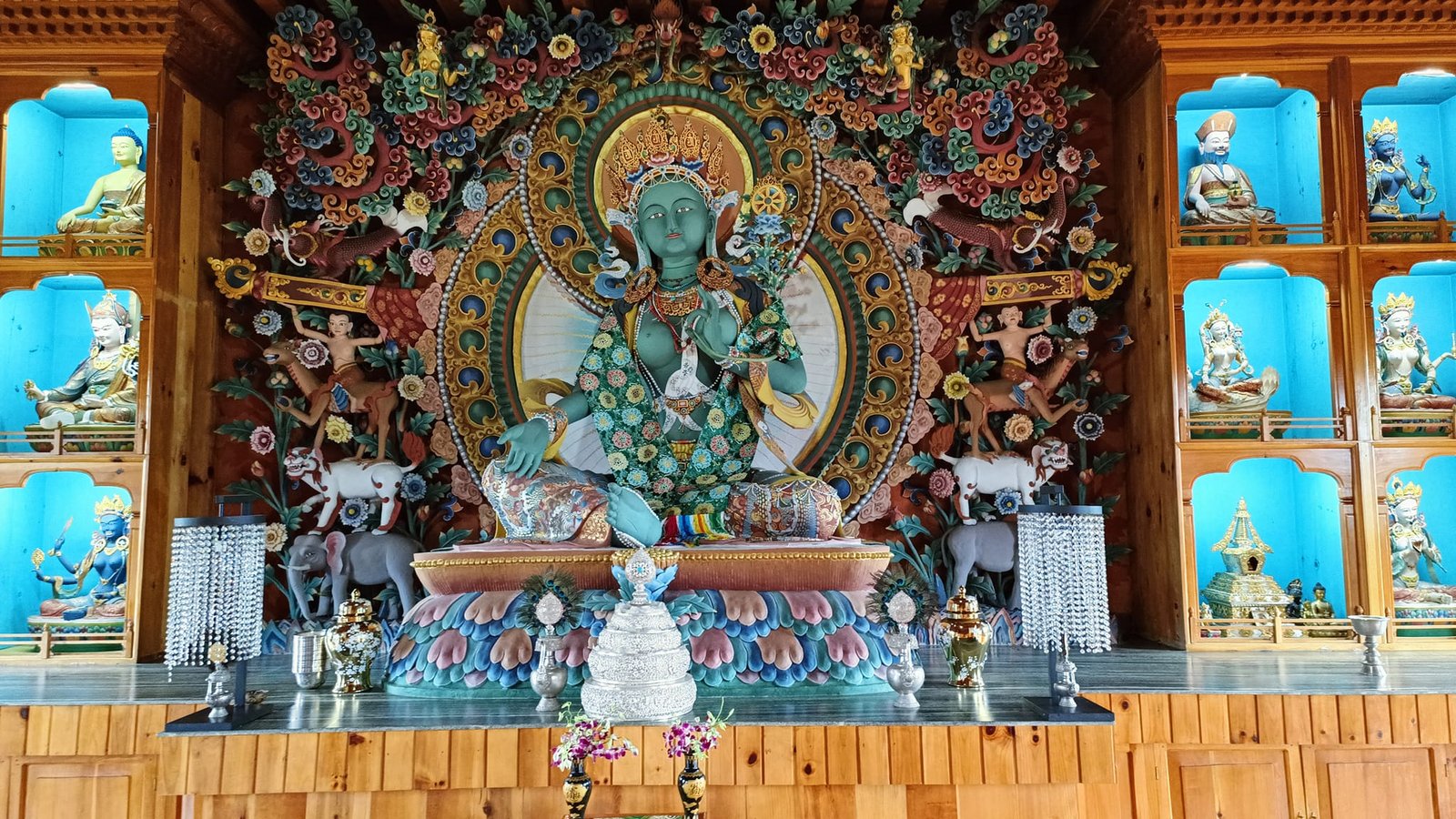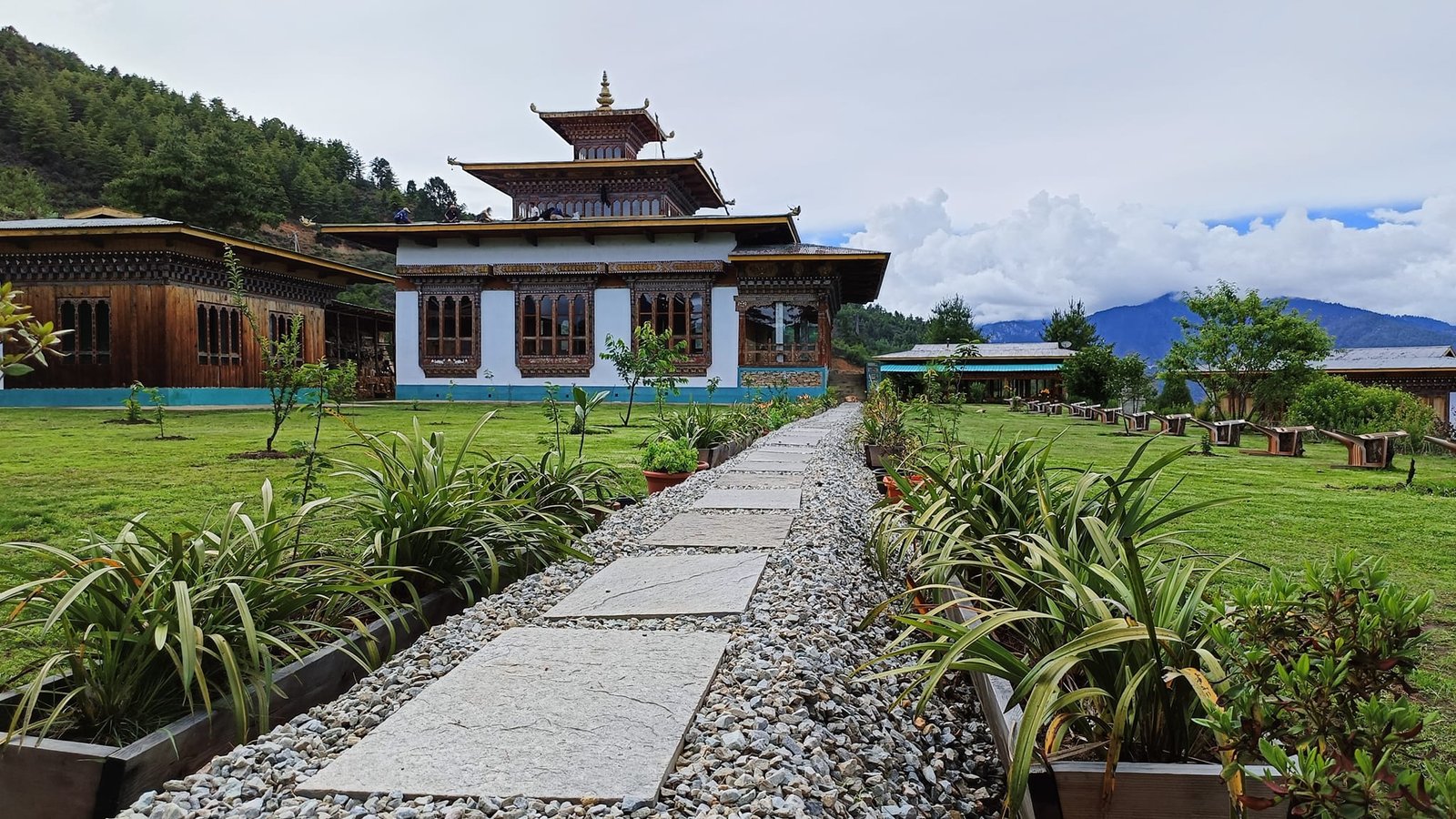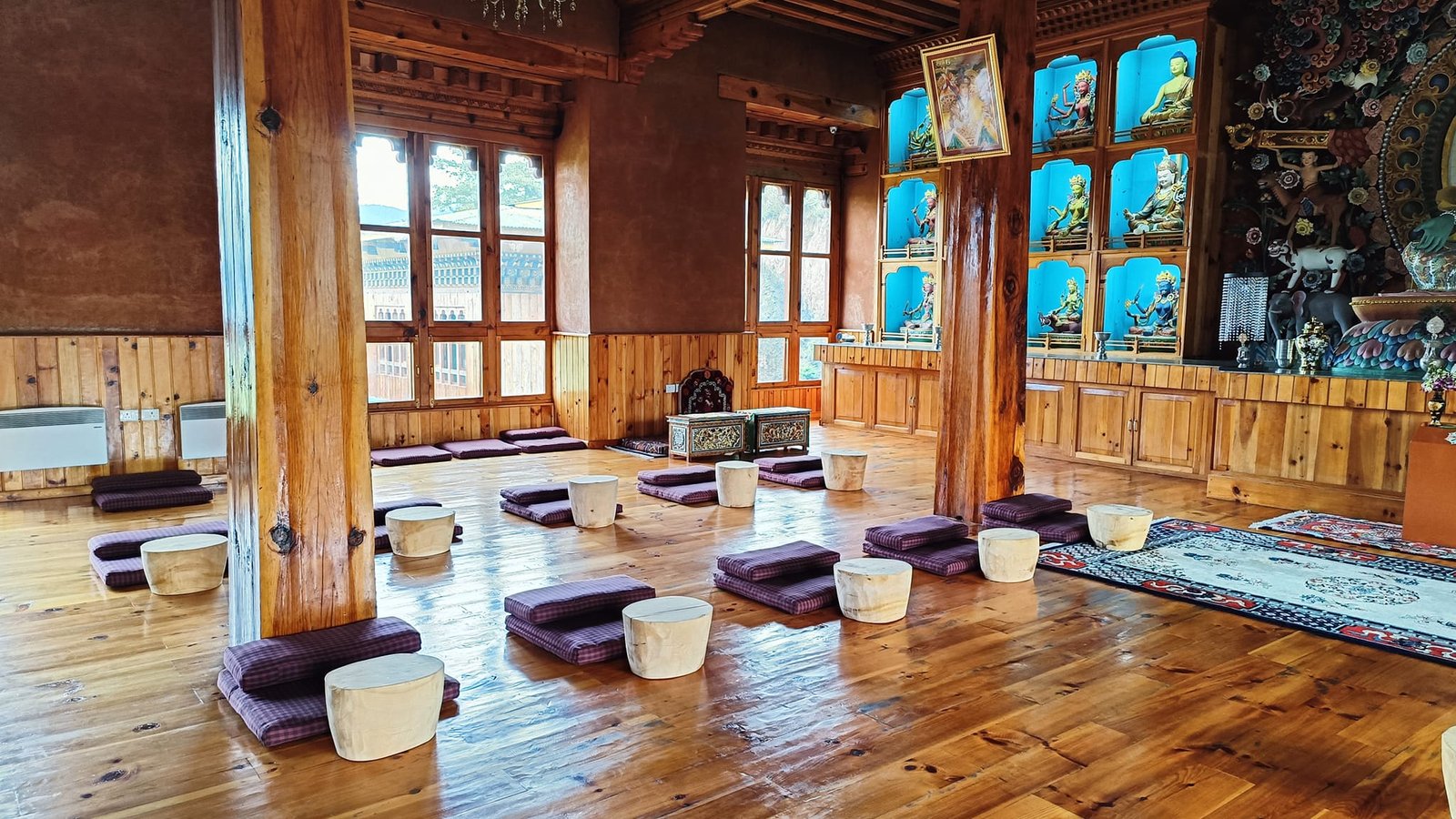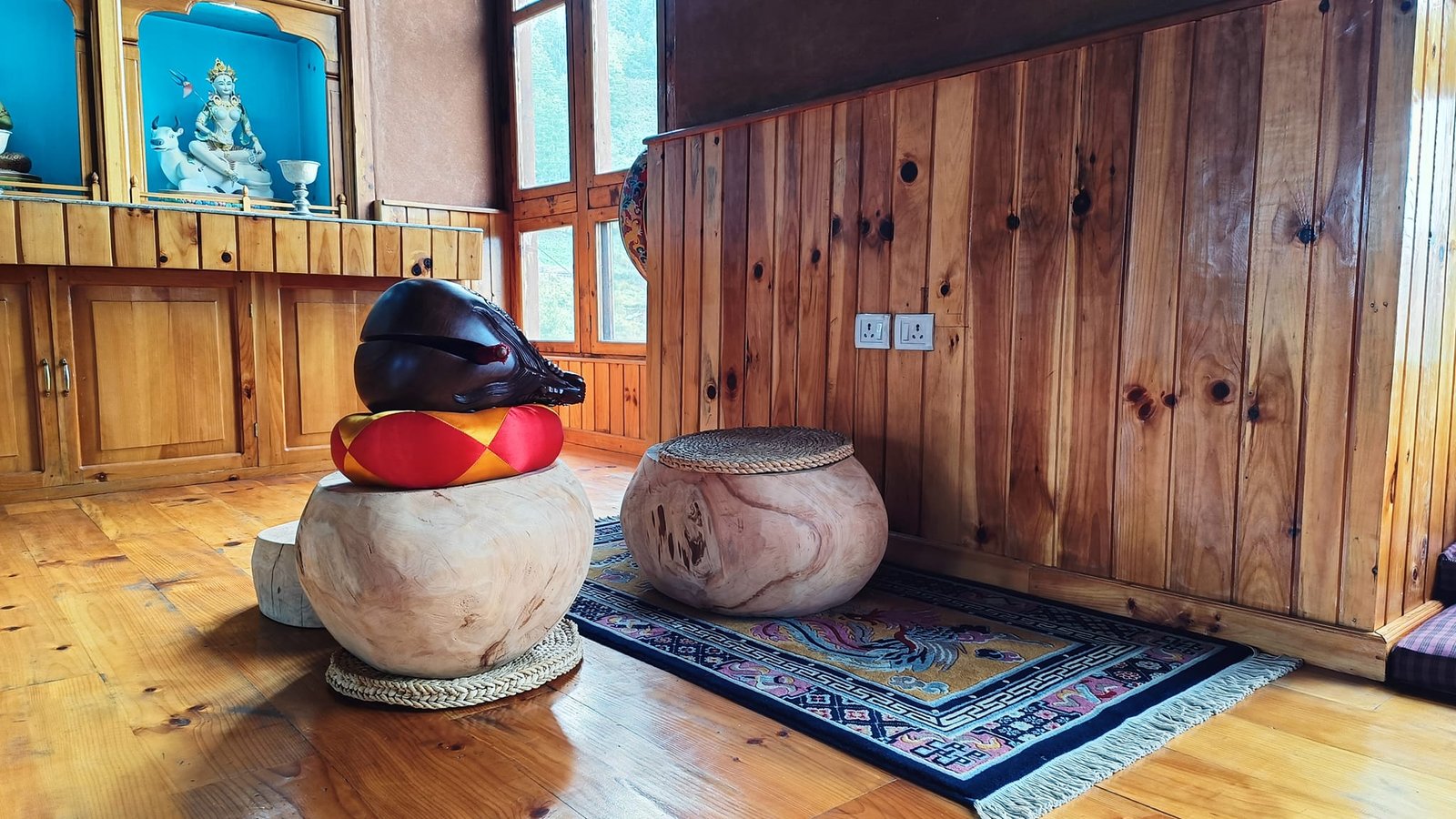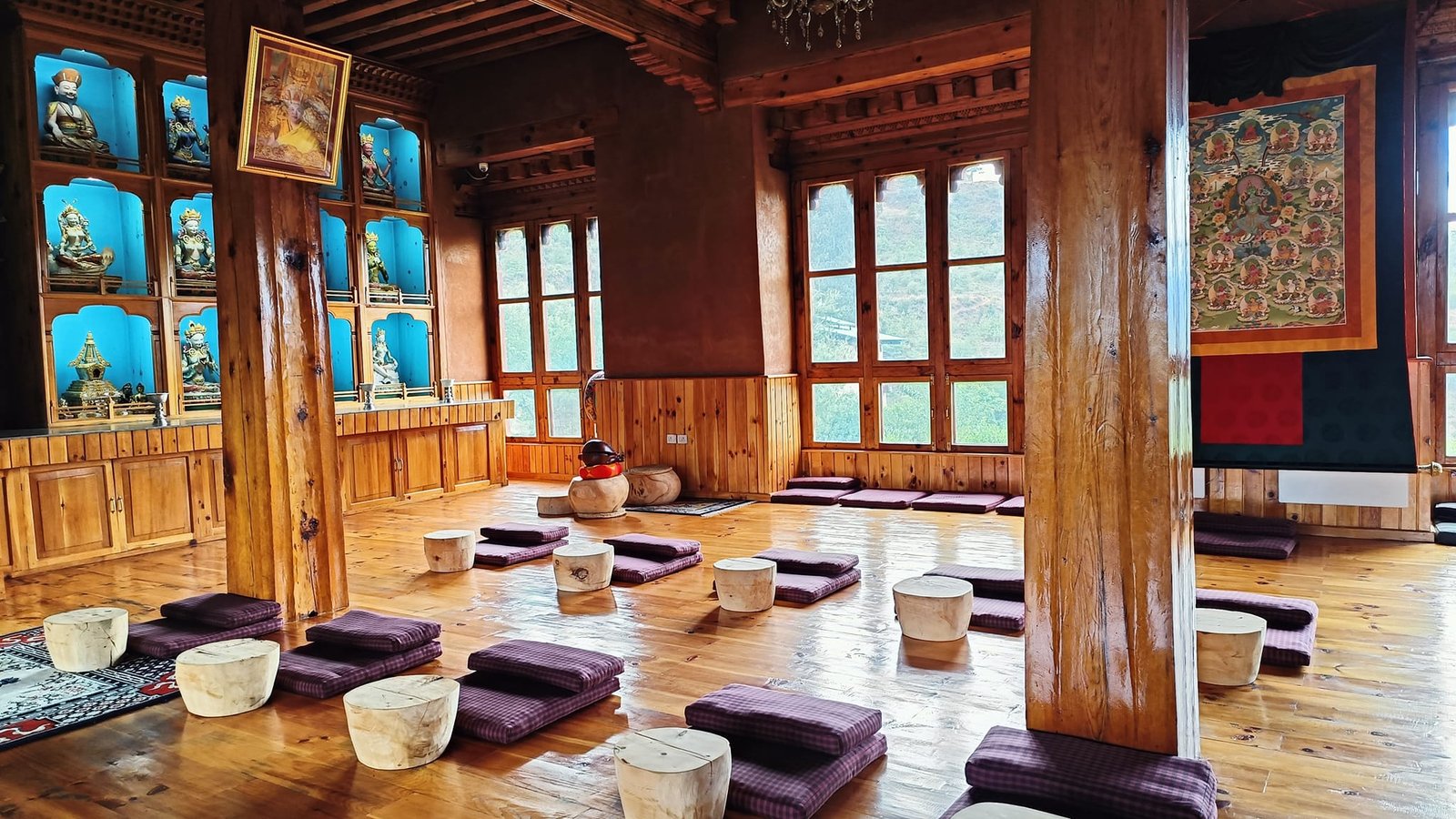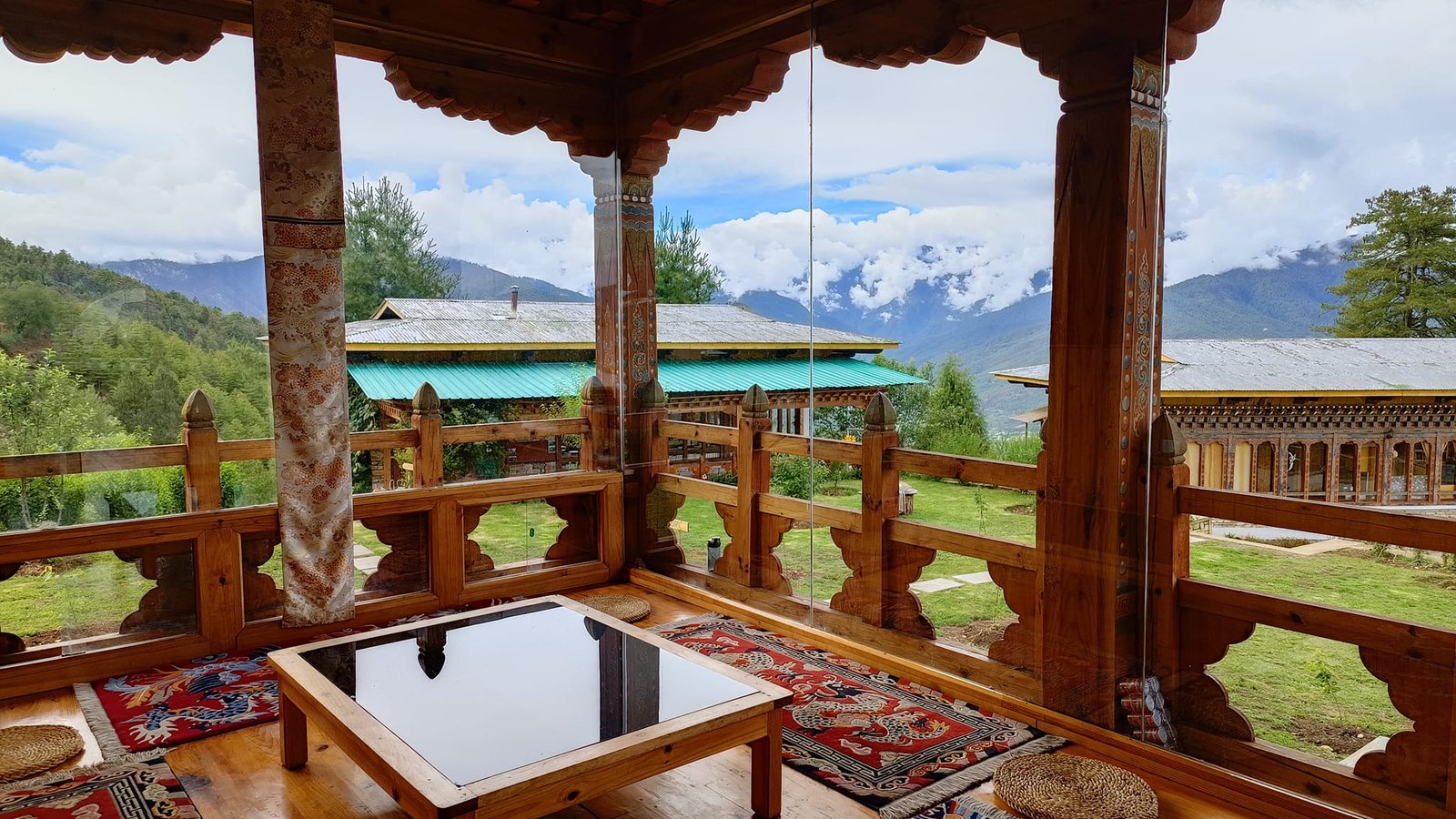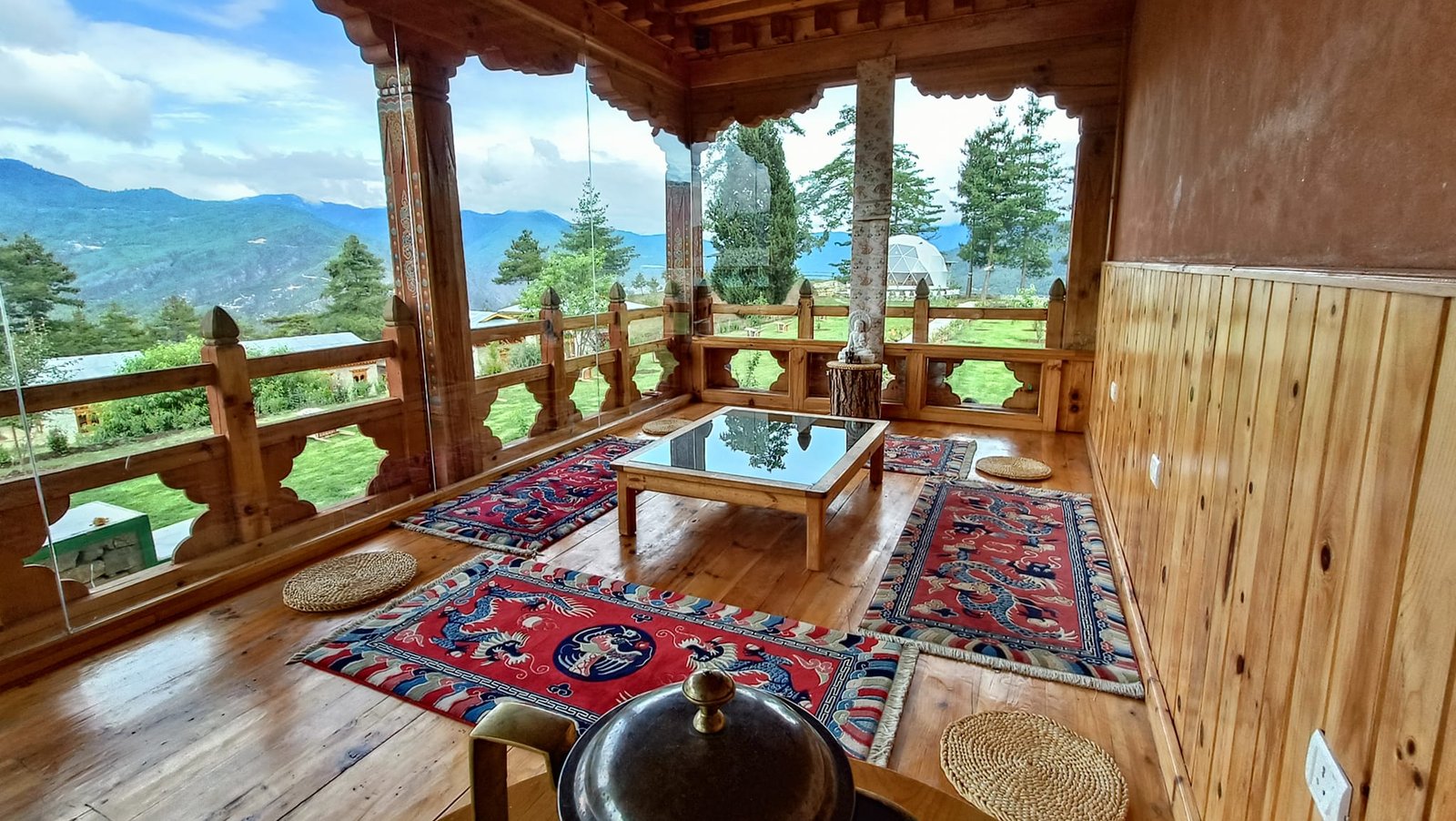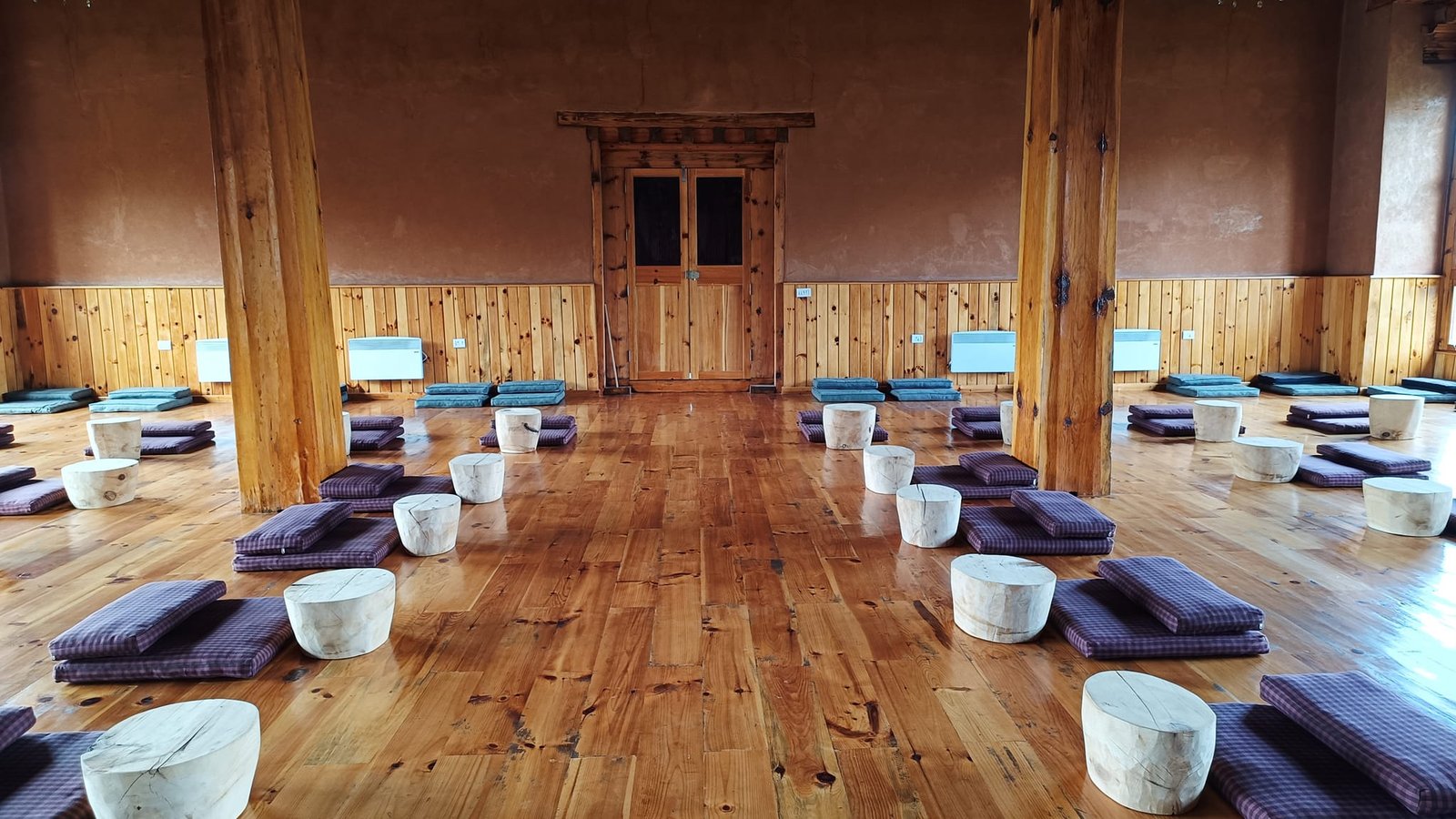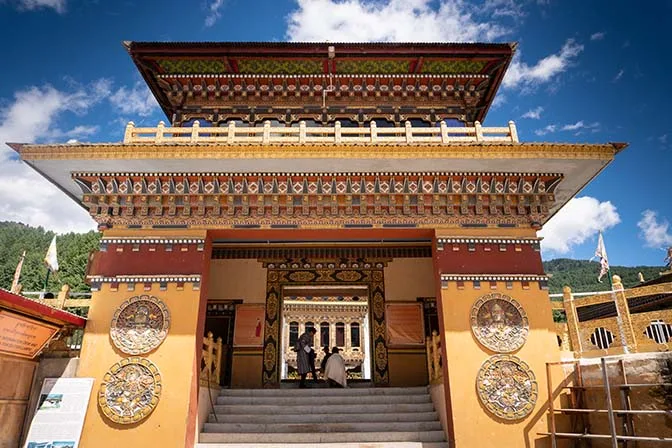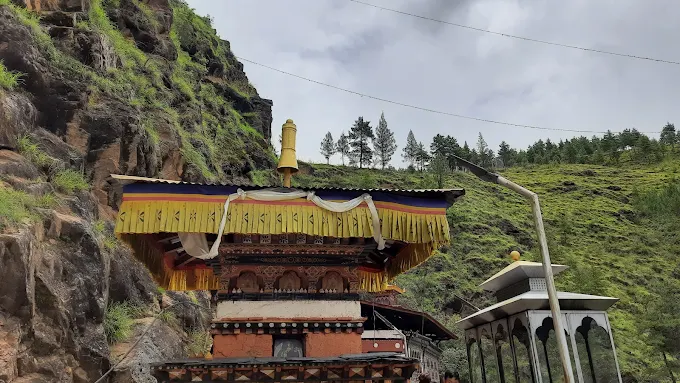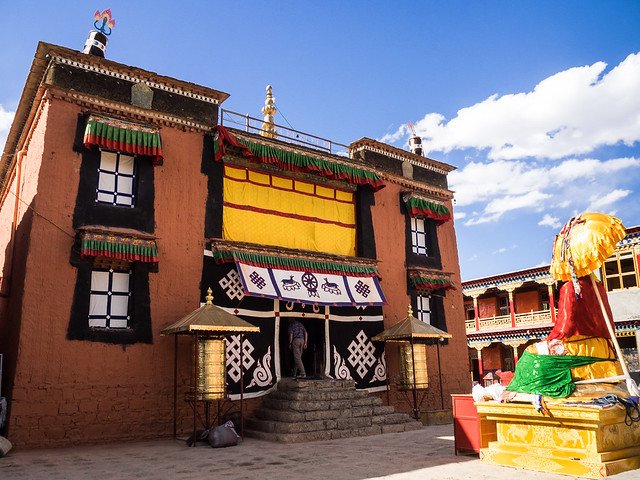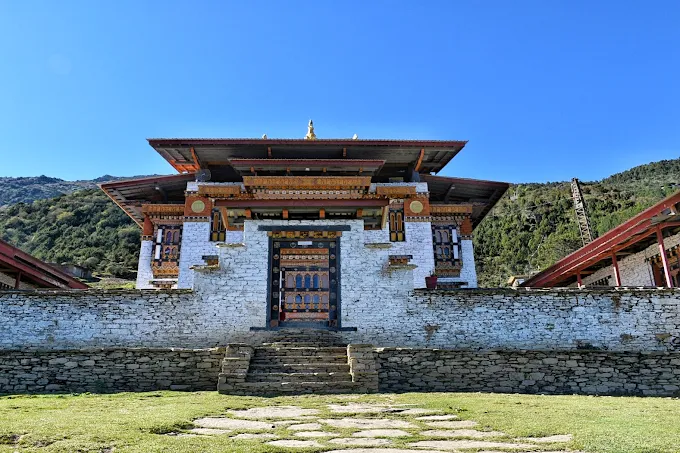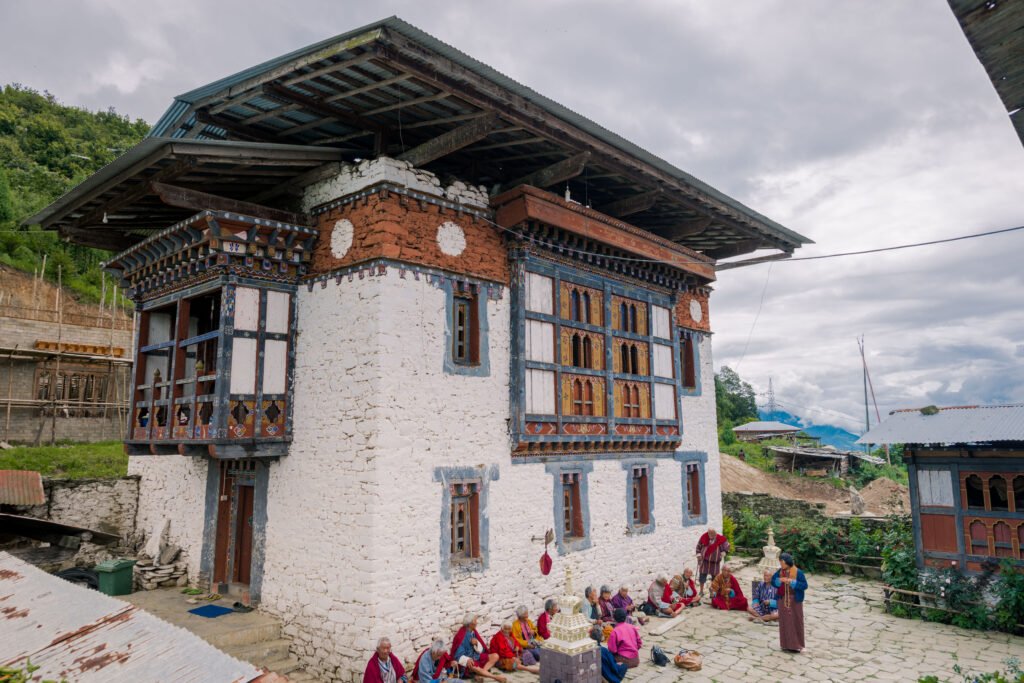Paro Tara Monastery: Notes on Tara’s Presence in Paro
Perched within the scenic Paro Valley, where the Paro Chhu River flows through a landscape of pine and rhododendron, sites in Paro Dzongkhag honor the deity Tara, known for compassion and protection. No specific monastery named “Paro Tara Monastery” is documented, but Tara’s presence is noted at locations like Dzongdrakha Monastery and Paro Taktsang. In these sacred spaces, monks chant mantras, their voices resonating around statues of Green Tara, reflecting Nyingma and Drukpa Kagyu traditions. These sites connect to Bhutan’s spiritual heritage, drawing pilgrims and visitors to their serene grounds.
Whispers of Compassion: Overview and Significance
Introduction to Tara’s Presence in Paro
In Paro Dzongkhag, Bhutan, the deity Tara is venerated at existing monasteries, though no distinct “Paro Tara Monastery” is officially recognized. Dzongdrakha Monastery, located above Bondey village, and Paro Taktsang (Tiger’s Nest), perched at 3,120 meters, are known to include shrines or statues dedicated to Tara. These sites offer a tranquil retreat, embodying Bhutan’s spiritual legacy through meditation and protective rites.
Historical Journey
Tara’s veneration in Paro is linked to the broader influence of Guru Rinpoche, who meditated in the region during the 8th century, as recorded at Paro Taktsang. Dzongdrakha Monastery, established in the 14th or 16th century, includes a shrine to Tara among its four temples. These sites have been maintained by local communities, preserving their spiritual roles over centuries.
Cultural Significance
- Nyingma/Drukpa Kagyu Devotion: Tara, particularly Green Tara, is honored for compassion, aligning with Nyingma and Drukpa Kagyu practices.
- Bhutanese Heritage: These sites preserve rituals tied to Tara, reflecting Bhutan’s spiritual identity.
- Protective Role: Tara’s blessings are sought for health and safety, a valued tradition.
- Regional Influence: Devotees from Paro and beyond visit, fostering community bonds.
Unique Legacy
- Tara Shrines: Present at Dzongdrakha and possibly Taktsang, these spaces hold spiritual significance.
- Valley Setting: The hillside or cliffside locations enhance meditative focus.
- Historical Ties: Linked to Guru Rinpoche’s legacy, they reflect Bhutanese resilience.
- Cultural Symbol: Tara’s presence symbolizes compassion in Bhutanese faith.
Community and Global Impact
- Local Devotion: Monasteries host Tara-related rituals, strengthening local ties.
- Pilgrimage Hub: Visitors are drawn to these sites for their spiritual aura.
- Global Appeal: International seekers explore Tara’s traditions.
- Cultural Dialogue: Shared practices unite diverse visitors.
Modern Relevance
- Spiritual Retreat: These sites offer mindfulness opportunities.
- Cultural Preservation: They safeguard Tara’s rituals.
- Community Role: Blessings continue to nurture Paro’s people.
Historical Anecdotes
- Guru’s Influence: His meditation in Paro ties to Tara’s veneration.
- Dzongdrakha Founding: 14th-century shrines honor Tara.
- Local Tales: Healing stories enhance its spiritual draw.
Social Role
- Community Hub: Rituals unite Paro’s Buddhists.
- Healing Center: Tara blessings support community health.
- Charitable Spirit: Feasts reflect compassion.
Artistic Influence
- Thangka Art: Tara murals inspire local artists.
- Cultural Icon: Valley views grace imagery.
- Festival Art: Cham dances showcase craftsmanship.
The presence of Tara in Paro’s monasteries, from Dzongdrakha to Taktsang, weaves a narrative of devotion and compassion that enriches Bhutan’s Nyingma/Drukpa Kagyu heritage. These sites, tied to Guru Rinpoche’s legacy, unite monks and pilgrims in spiritual pursuit. Their sacred shrines and scenic trails reflect a Himalayan soul. As we explore their features, these locations reveal how their tranquil settings nurture faith and healing.
Crafted by the Valley: Architectural and Spiritual Features
Iconic Design
Monasteries in Paro honoring Tara, such as Dzongdrakha, blend Nyingma/Drukpa Kagyu simplicity with their hillside settings, harmonizing with the valley’s rugged terrain. Whitewashed stone walls and wooden roofs, adorned with prayer flags, rise from the slopes, reflecting Buddhist serenity. The layout, centered on lhakhangs, prioritizes meditative function, with courtyards fostering community. Their perch above the Paro Chhu River ties them to Bhutan’s Himalayan ethos.
Key Structures
- Main Lhakhang: Houses Tara statues, central to worship at Dzongdrakha.
- Tara Shrine: A dedicated space at Dzongdrakha for Green Tara.
- Chorten Courtyard: Stone stupas honor lamas, surrounded by prayer wheels.
- Meditation Spaces: Caves or rooms at Taktsang and Dzongdrakha for retreat.
Worshipped Statues
- Green Tara (Drolma): A bronze statue, symbolizing compassion, radiates healing.
- Guru Rinpoche (Padmasambhava): A gilt statue, embodying guidance.
- Chenrezig (Avalokitesvara): A white stone statue, representing mercy.
- Spiritual Role: Devotees offer butter lamps to Tara for health.
Materials and Techniques
- Construction: Local stone and timber, joined with Bhutanese methods.
- Artistry: Thangka murals and carvings reflect Nyingma symbolism.
- Cultural Essence: Designs prioritize meditative simplicity.
Signature Elements
- Tara Shrine: Anchors healing rituals at Dzongdrakha.
- Chorten Cluster: Symbolizes spiritual longevity.
- Prayer Flags: Carry blessings across the valley.
Preservation Efforts
- Restoration: Community efforts maintain Dzongdrakha and Taktsang.
- Challenges: Erosion affects stonework.
- Modern Additions: Solar lights enhance accessibility.
Environmental Integration
- Valley Harmony: Respects Paro’s ecosystem.
- Eco-Practices: Monks maintain trails and flora.
- Wildlife Haven: Birds enhance serenity.
Landscape Integration
- Hillside Perch: Enhances meditative focus.
- Paro Chhu Views: Mirrors inner calm.
- Rhododendron Slopes: Offer solitude.
These shrines and lhakhangs, tied to Tara’s legacy, are sanctuaries for Nyingma/Drukpa Kagyu practices, connecting devotees to Bhutan’s faith. Their spaces invite engagement with living traditions. As we explore rituals, their role as meditative retreats emerges.
Rites of the Healer: Rituals and Practices
Daily Sacred Rites
- Morning Chanting: Monks recite Tara mantras, fostering compassion.
- Meditation Sessions: Silent meditation centers on healing.
- Butter Lamp Offerings: Lit for Tara’s blessings.
Unique Practices
- Tara Puja: Honors Green Tara for protection.
- Healing Prayers: Offered for the sick.
- Signature Ritual: Offering scarves to Tara.
Festival Traditions
- Tara Tshechu: Cham dances and offerings at Dzongdrakha.
- Lhabab Duchen: Chorten circuits honor the Buddha.
- Losar: Purification rites bless visitors.
Visitor Engagement
- Accessible Rituals: Join chants or offer scarves, guided by monks.
- Offerings: Butter lamps and flags invite participation.
- Etiquette: Bow and maintain silence.
Spiritual Community Roles
- Monastics: Lead rituals at Dzongdrakha or Taktsang.
- Healers: Perform Tara blessings.
- Lay Devotees: Maintain grounds.
Ritual Symbolism
- Butter Lamps: Symbolize healing light.
- Scarves: Represent purity.
- Cham Dances: Enact protection.
Monastic Life
- Daily Routine: Chants, meditation, and pujas.
- Community Service: Guide pilgrims.
- Training: Learn Tara rituals.
These rituals connect devotees to Tara’s legacy, inviting engagement with Paro’s faith. As we turn to visitor information, the valley setting guides planning.
Journey to Compassion: Visitor Information
Navigating to Paro Tara Sites
- Location: Paro Dzongkhag, near Dzongdrakha (2,500m) or Taktsang (3,120m), 6-10 km from Paro town.
- Landmarks: Near Bondey or Taktsang trailhead, with signs.
- Routes: Hike from Paro base or drive to trailheads.
Address
- Dzongkha: Paro Tara Lhakhang, Paro Dzongkhag, Bhutan.
- English: Paro Tara Monastery, Paro District, Bhutan.
Visiting Hours and Etiquette
- Hours: 6:00 AM–5:00 PM, with pujas mornings.
- Etiquette: Dress modestly, remove shoes, avoid disruptions.
- Custom: Offer lamps and bow.
Transport Options
- By Foot: 40 minutes to 2 hours from base.
- By Taxi: Drive to trailhead, then trek.
- By Horse: To midway points.
Accessibility and Safety
- Mobility: Steep trails may challenge; no ramps.
- Safety: Stable paths; carry water.
- Tips: Wear boots, rest at viewpoints.
Amenities and Surroundings
- Facilities: Basic restrooms at trail points.
- Nearby: Paro Rinpung Dzong, Kyichu Lhakhang.
- Dining: Vegetarian meals in Paro town.
Immersive Visitor Tips
- Best Timing: Morning for chants.
- Sensory Moments: Inhale rhododendron air.
- Statue Connection: Offer lamps to Tara.
- Festival Planning: Attend Tara Tshechu.
Photography Tips
- Best Angles: Sunrise at shrines.
- Respectful Shots: Avoid pujas without permission.
- Scenic Views: Valley or cliffs.
- Equipment: Lightweight camera.
The journey to Paro Tara sites, guided by valley or cliffside trails, invites engagement with Nyingma/Drukpa Kagyu traditions. Their shrines offer a window into Bhutan’s faith. As we explore insights, their role as healing beacons deepens our connection.
Insights of the Healer: Cultural and Spiritual Reflections
Nyingma/Drukpa Kagyu Philosophy
Paro Tara sites embody compassion and wisdom through meditation and healing. Tara and Guru Rinpoche guide devotees, reflected in pujas. Mahamudra fosters enlightenment.
Environmental Spirituality
The valley or cliffside perch ties to nature’s reverence. The Paro Chhu and flora foster calm, with offerings to deities. The landscape invites harmony reflection.
Artistic Symbolism
Thangka murals depict Tara’s aid, symbolizing compassion. Chortens represent the Buddha’s mind, while flags balance elements, weaving Nyingma ideals.
Community Resilience
Linked to Guru’s followers, these sites reflect Bhutanese endurance. Healing roles show collective faith, uniting Paro’s Buddhists.
Environmental Stewardship
Slopes foster eco-ethics. Monks protect trails and flora, urging visitors to honor the landscape.
Meditative Practices
Mahamudra meditation cultivates awareness. Shrines or caves offer healing retreats, guided by lamas.
Cultural Narratives
- Guru’s Legacy: His blessings inspire devotion.
- Healing Tales: Miracles link past and present.
- Festival Lore: Tara Tshechu dances carry traditions.
Historical Context
- Nyingma Roots: Guru’s presence shaped identity.
- Dzongdrakha Era: Shrines honored Tara.
- Modern Continuity: Healing endures in Paro.
Reflecting on the Journey
Paro Tara sites, cradled in Paro’s valley or cliffs, are sanctuaries where compassion meets healing. Their shrines, alive with Tara’s legacy, embody Bhutan’s Nyingma/Drukpa Kagyu soul. Trails tell of resilience and devotion. Visitors find reflection in Tara’s blessings. As you depart, the Paro Chhu’s murmur lingers, a reminder of compassion’s reach.
